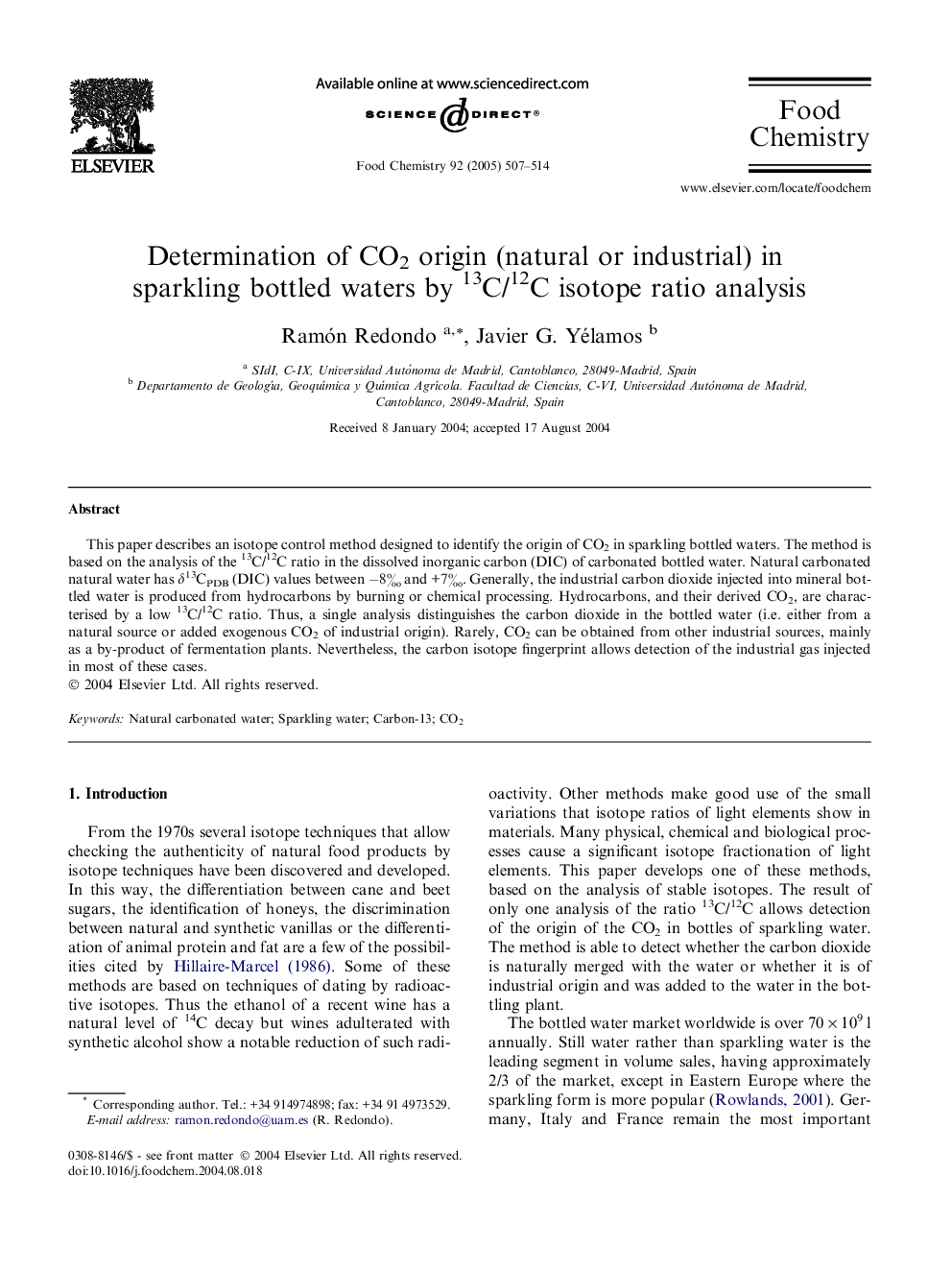| Article ID | Journal | Published Year | Pages | File Type |
|---|---|---|---|---|
| 10544075 | Food Chemistry | 2005 | 8 Pages |
Abstract
This paper describes an isotope control method designed to identify the origin of CO2 in sparkling bottled waters. The method is based on the analysis of the 13C/12C ratio in the dissolved inorganic carbon (DIC) of carbonated bottled water. Natural carbonated natural water has δ13CPDB (DIC) values between â8â° and +7â°. Generally, the industrial carbon dioxide injected into mineral bottled water is produced from hydrocarbons by burning or chemical processing. Hydrocarbons, and their derived CO2, are characterised by a low 13C/12C ratio. Thus, a single analysis distinguishes the carbon dioxide in the bottled water (i.e. either from a natural source or added exogenous CO2 of industrial origin). Rarely, CO2 can be obtained from other industrial sources, mainly as a by-product of fermentation plants. Nevertheless, the carbon isotope fingerprint allows detection of the industrial gas injected in most of these cases.
Keywords
Related Topics
Physical Sciences and Engineering
Chemistry
Analytical Chemistry
Authors
Ramón Redondo, Javier G. Yélamos,
